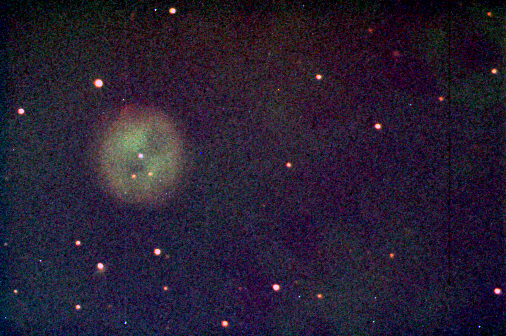
On the night of Sunday, May 11, RIT student John Bero -- who is taking the Observational Astronomy course -- came out to take pictures for his course project. He is learning how to combine images taken through different colored filters to create a color composite picture.
The weather was pretty good: warm, no wind, not very humid. The seeing was decent, but the sky was bright, due to the nearly full moon rising in the East. We first took some images of the Cateye Nebula, NGC 6543, but it was very low in the sky, and the sky in its direction was very bright due to city lights.
So, we switched to the Owl Nebula, M97, and had better luck. It was nearly overhead, so the sky was darker. We took a series of guided 30-second images through the Johnson Cousins B, V, R filters: 23 in R, 20 in V, and 40 in B. Some clouds came in during the final few B-band images.
Mr. Bero will be reducing these data himself, but I did a quick check, just for fun. After cleaning each individual image, I combined all the images in each filter using a median technique. Following the guide at the Northen Hemisphere Rogi Observatory , I overlaid the R, G and B median images to create a pseudo-color image. The V-band image had some flatfield issues -- apparently the filter didn't return to its proper position -- but the result isn't terrrible.

I'm looking forward to Mr. Bero's version!
Last modified 5/12/2014 by MWR.